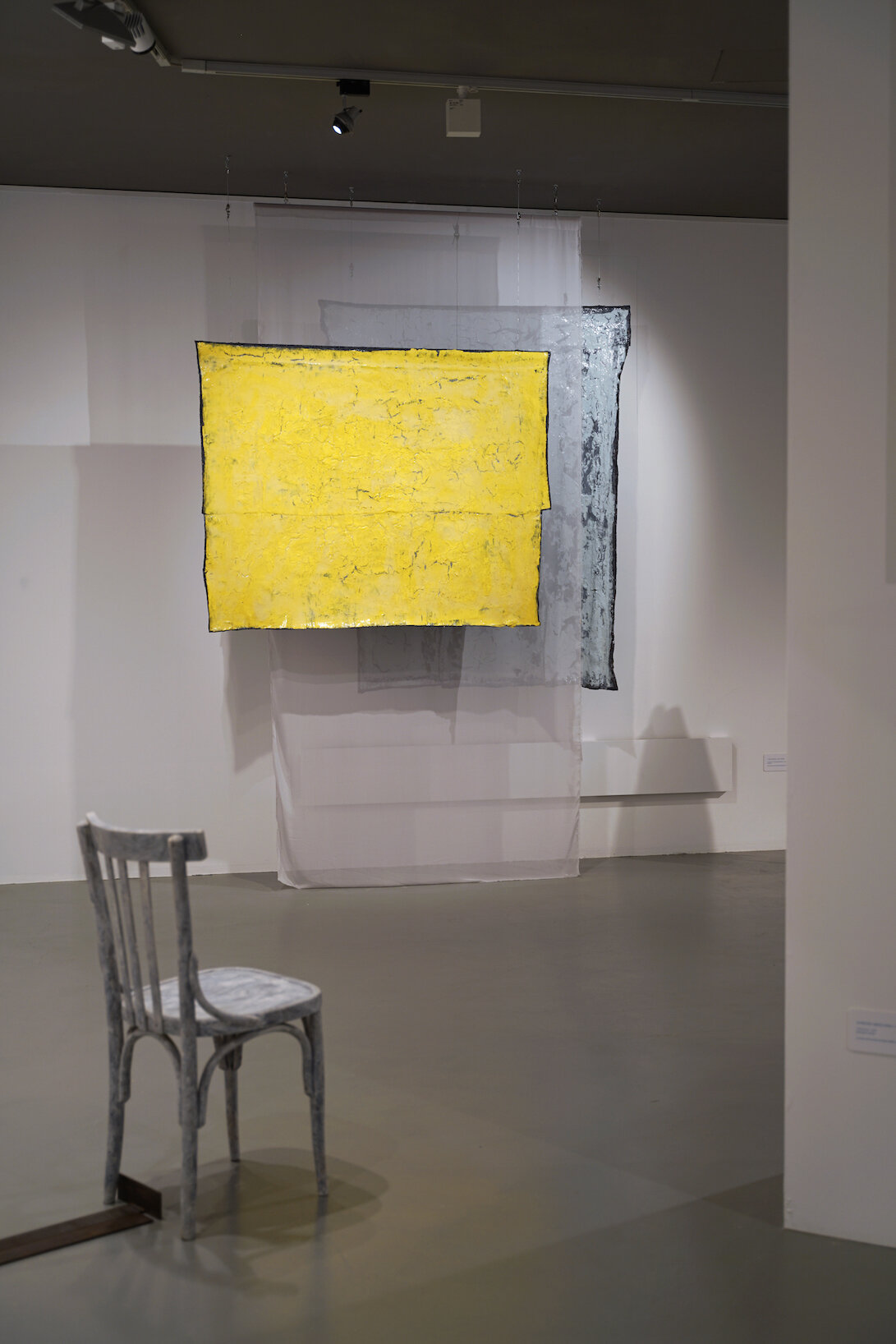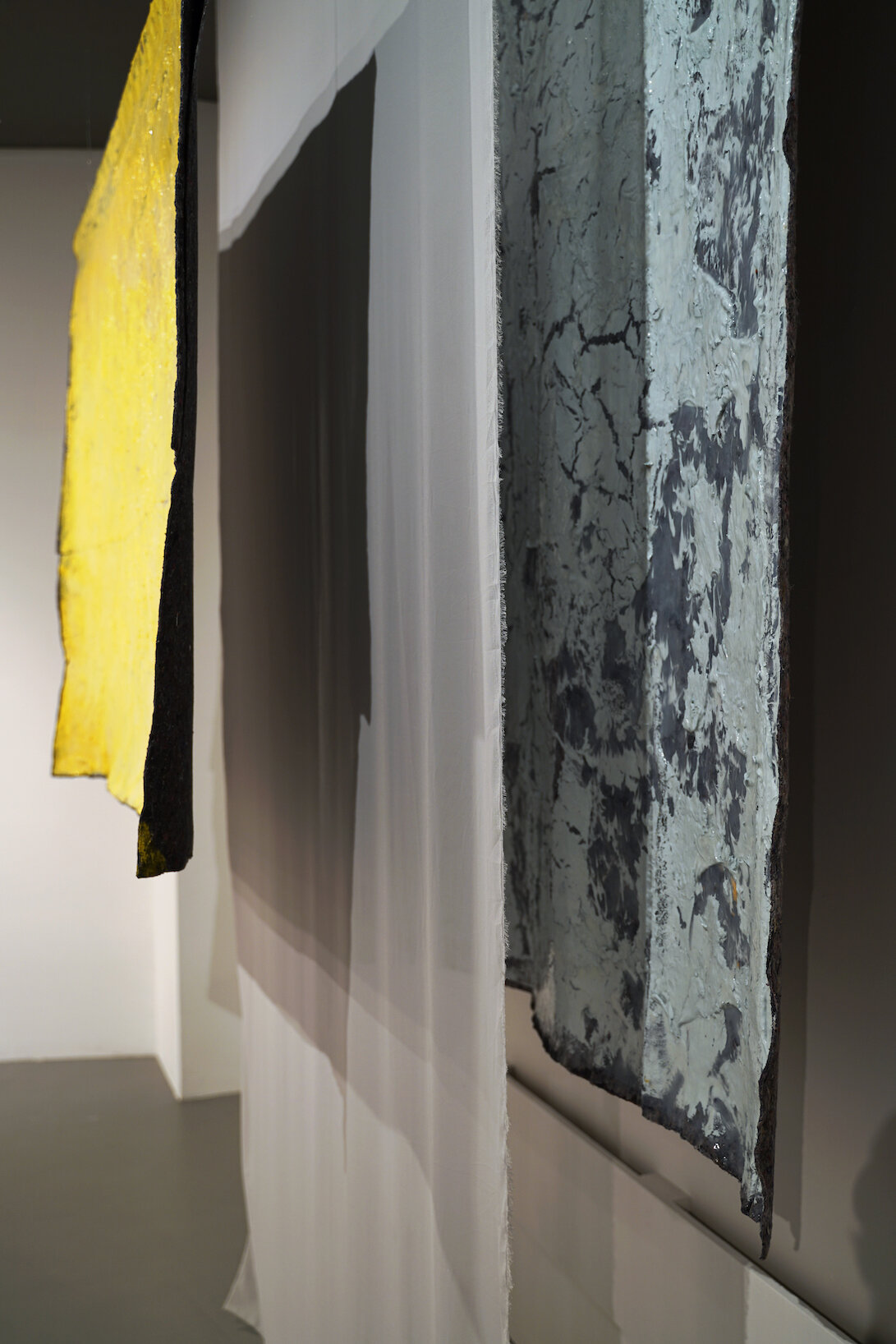
Carlos Bunga
*1976, Portugal
lives and works in Barcelona, Spain
EN
Portuguese artist Carlos Bunga (*1976, Portugal) is interested in the temporal and emotional processes of the pre-existing architectural space. In his installations, he mainly uses everyday materials, i.e. cardboard, packing tape, paint and similar. In his installation “Planes of Color Suspended #2” (2018-20), as in his other site-specific works, he focuses on the way the environment affects and guides us as humans, whereby the physical structure of the work can always be understood as an analogy of thought’s shapes and patterns. His works are both poetic and raw, aesthetically simple and conceptually complex. By rethinking the dialectics of construction and destruction, he initiates a critical reflection process on humans and their relationship to their environment.
IT
L’artista portoghese Carlos Bunga (*1976, Portogallo) si interessa ai processi temporali ed emotivi dello spazio architettonico già esistente. Nelle sue installazioni si affida principalmente a materiali di uso quotidiano - cartone, nastro adesivo da imballaggio, vernice e simili. Nella sua installazione “Planes Of Color Suspended #2” (2018–20), come in altri suoi lavori site-specific, si occupa del modo in cui l’ambiente circostante influisce e guida noi umani, per cui la struttura fisica dell’opera può sempre essere intesa come un’analogia per forme e schemi di pensiero. Le sue opere sono allo stesso tempo poetiche e ruvide, esteticamente semplici e concettualmente complesse. Ripensando la dialettica della costruzione e della distruzione, egli avvia un processo di riflessione critica sull’essere umano e sul suo rapporto con l’ambiente.
DE
Der portugiesische Künstler Carlos Bunga (*1976, Portugal) interessiert sich für die zeitlichen und emotionalen Prozesse des bereits existierenden architektonischen Raums. Er verlässt sich bei seinen Installationen vor allem auf alltägliche Materialien - Karton, Packband, Farbe und dergleichen. In seiner Installation „Planes of Color Suspended #2“ (2018–20) beschäftigt er sich, genauso wie in seinen anderen raumspezifischen Arbeiten, mit der Art und Weise, wie die gebaute Umgebung auf uns Menschen einwirkt und uns leitet, wobei die physische Struktur der Arbeit immer auch als Analogie für Formen und Denkmuster verstanden werden kann. Seine Werke sind sowohl poetisch als auch roh, ästhetisch einfach und konzeptuell komplex. Indem er die Dialektik von Konstruktion und Zerstörung neu überdenkt, setzt er einen kritischen Reflexionsprozess in Bezug auf den Menschen und seine Beziehung zu seiner Umgebung in Gang.


